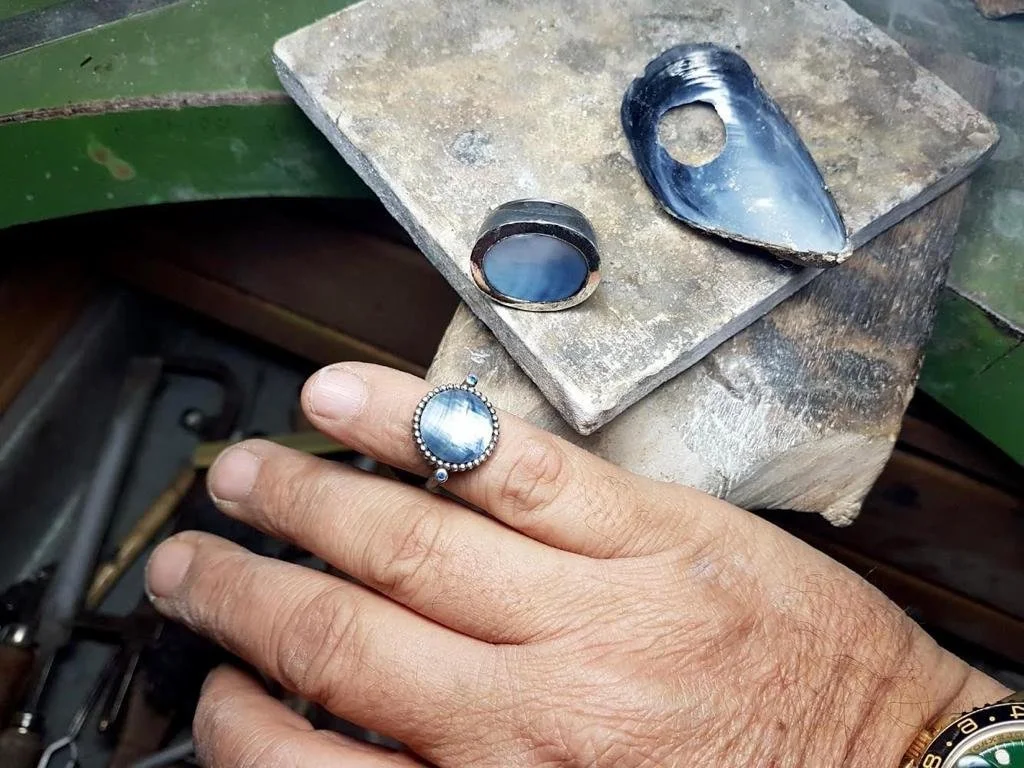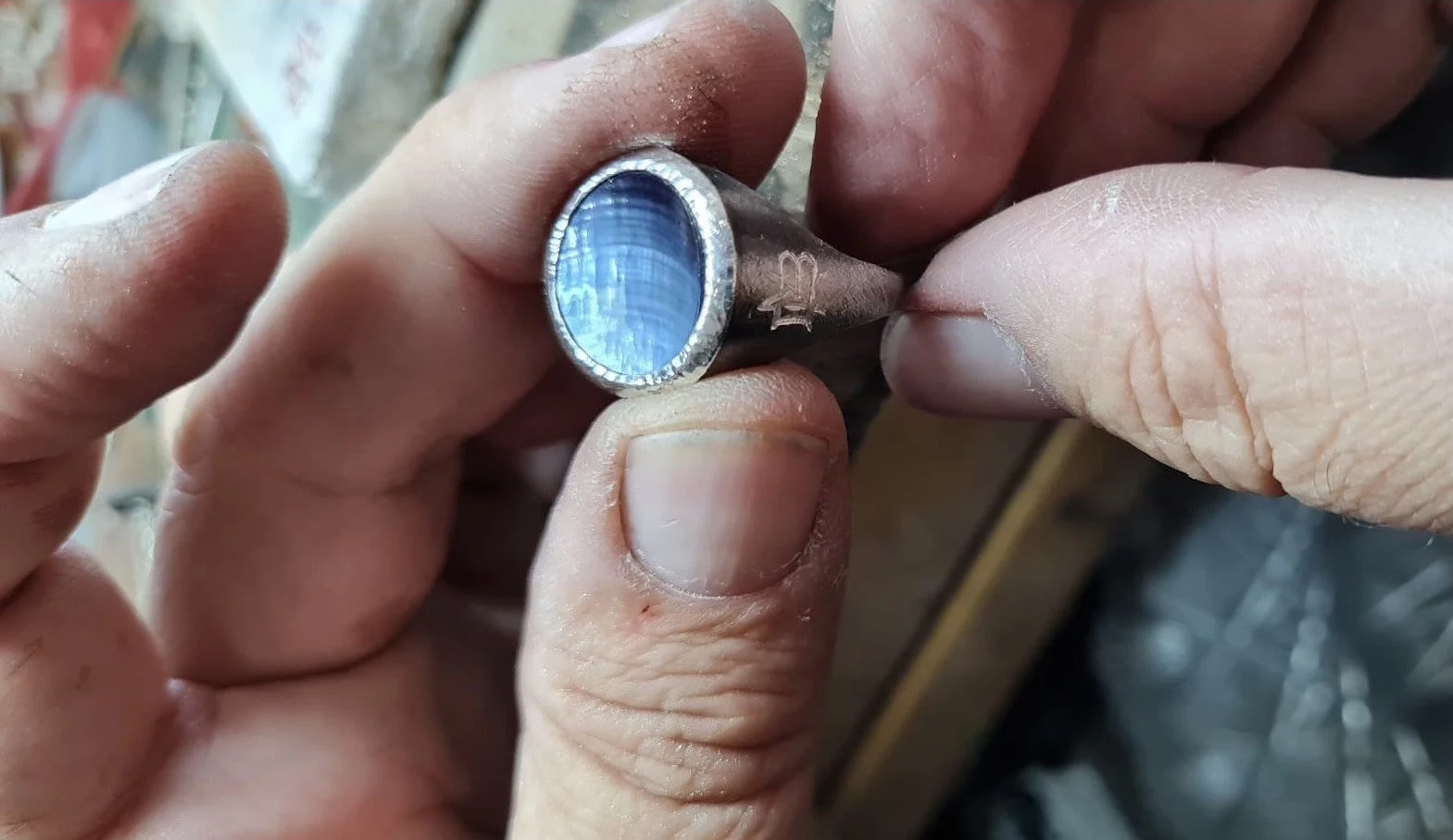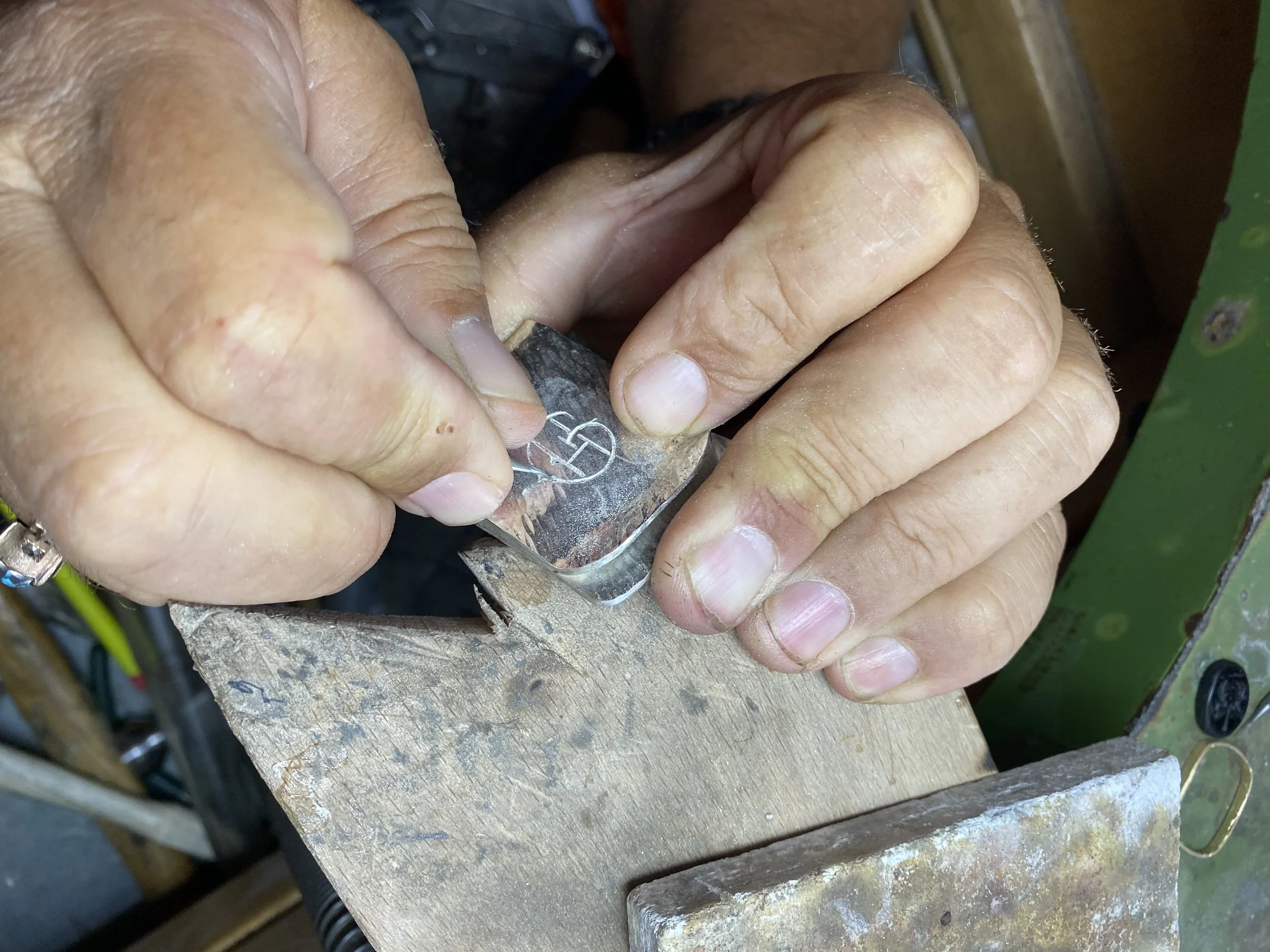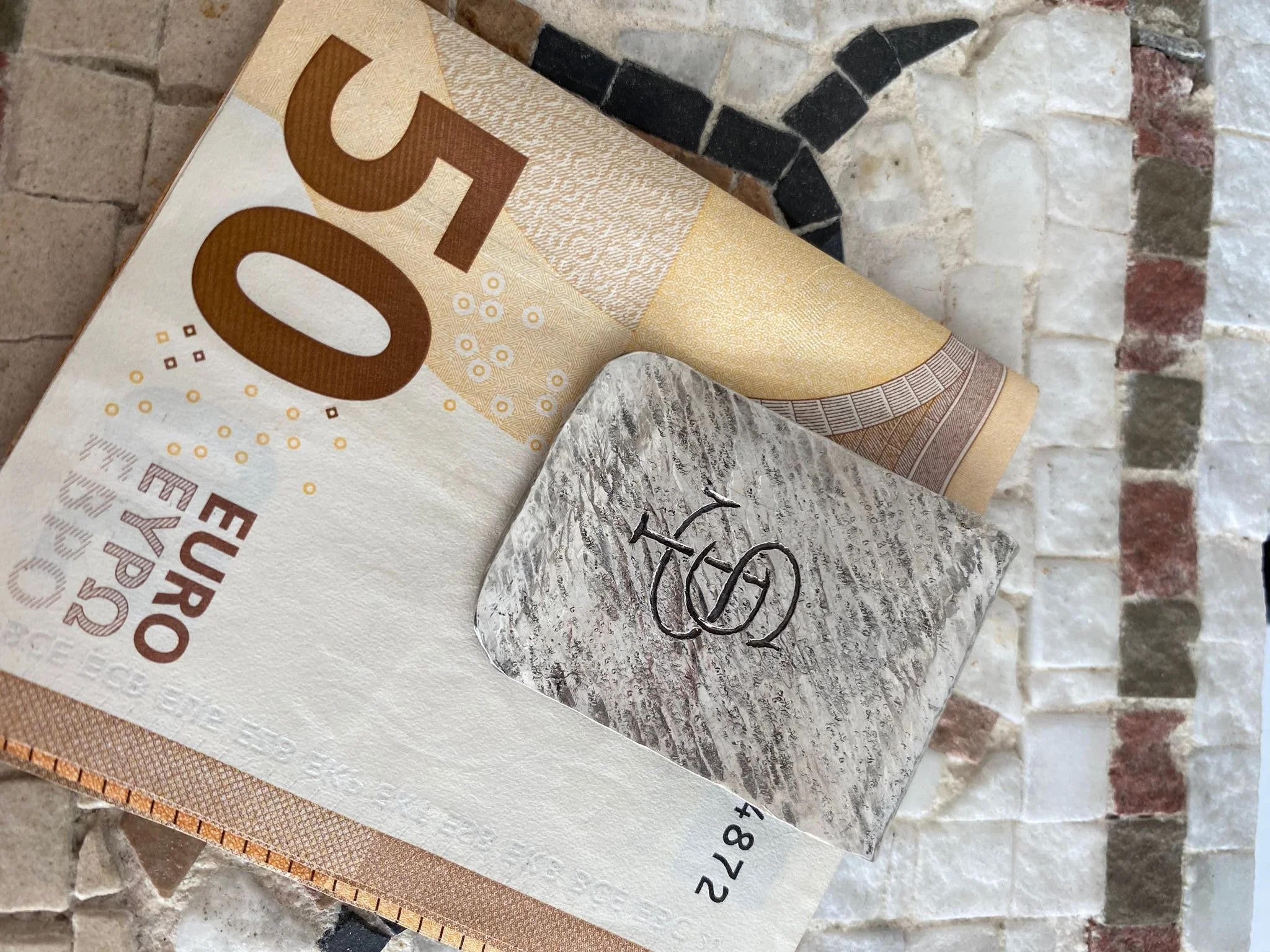Gustavo Renna between Renna and beauty and Napoli – family matters
Interview by Arianna Chirico / arya_ayra
GUSTAVO RENNA will be exhibiting at HOMI FASHION&JEWELS EXHIBITION 11 - 14 March 2022
A dedication to sustainability, craftsmanship, design and manufacturing with the ultimate accuracy. HOMI FASHION&JEWELS EXHIBITION explores a cultural challenge, is sustainability an utopian fantasy or a possibility?
Gustavo Renna, the work of four generations of artisans. What is your legacy?
My whole life is intrinsically connected to jewelry. My ancestors dedicated their lives to the art of jewelry, perpetuating a tradition that saw families bonding by marriage to each other. This is a way to preserve and improve the techniques acquired until then through unions between jewels rather than between people linked by feelings. This allowed you to be surrounded by jewelers from all sides of the family and to breathe love, passion, devotion and craft. Mine is a legacy made up of a variegated contamination of knowledge. My ancestors were engravers of the Royal House and engraving was one of the primordial forms of art: through it we have come to understand who we are. Through the rock engraving of hieroglyphs, we, as human beings who live on this planet, have had the opportunity to know our origins.
Do you carry on this tradition?
Yes, I carry on the traditions and still continue to practice the art of engraving. Today it has a different meaning.
What value do jewels have for you?
Jewels are a form of expression and communication. I feel very lucky, because I love my work immensely and together with my experience and my cultural experiences I was able to sharpen a particular intuition for the things that surround me. I turn my thoughts into jewels: it is enough for me to observe a woman, to see her gesturing and to imagine what is most appropriate for her; I can identify which is the jewel that describes and highlights her. I look around, I watch things, my city, its landscapes, its beauties and I am pervaded by the desire to give them a new life according to my personal vision. It is an almost natural process, I feel and then I create.
The city of Napoli, often mentioned in the cinema and in literature. Tell us something about this place the way you know it.
I believe that Neapolitans, but generally Italians do not deserve moments of obscurantism, because we were the birthplace of the Renaissance and we have a cultural heritage that sees beauty and riches in every inch of our national land. Campania served the royals of Europe, which at the time meant having served royalty from all over the world. We cannot forget what we have, but we should always be able to enhance our heritage, our wealth, our treasures. Economically it is difficult, in a historical period in which it is also difficult to survive, and for this reason there would be a need for a new reorganization of skills: small businesses, which have a more direct and immediate contact with the world around us. The task of dedicating oneself to the creative part and to the development of ideas, while those who have the economic clout have the task of making ideas real and tangible. However, it would be wrong to reduce the city to a nostalgic stronghold of culture and treasures: nowadays there are many colleagues who have inimitable creativity; a dexterity and a knowledge of the trade that is underestimated, but which is an incomparable wealth, because craftsmanship is the basis of everything we know as Italian creatives. The craftiness and immediacy with which these professionals are endowed, are skills that professional designers acquire only after long years of practice. As human beings, we are able to translate our ideas into tangible creations, but it is also true that translating also means betraying: to avoid that, I guess we should invest in the potential of craftsmanship and we should offer emotional and economic support. I do not want to diminish the work of those who have an excellent creative mind, but not the manual skills to give it shape; my point of view is more direct to what I feel inside.
Your jewels are closely linked to the territorial identity, to Campania, to Napoli, which is a city with an unparalleled heritage.
I try to express myself by keeping my local roots alive, telling and enhancing what I see when for everyone else they are useless stories. I believe it is significant to narrate points of view or stories every time something is created: our jewels have a visceral link with Napoli, with its identity, its features and its traditions. I feel tangibly connected with everything around me. For example, I made a line with the shell of a mussel. During an exhibition of vintage cars, I fell in love with a car of the director Roberto Rossellini. It was a Ferrari with a unique and very particular color: an indigo blue that completely overwhelmed me, so much so that I wanted it translated into a precious stone. I have never been able to find a stone of that color, but over the years my research has never ceased, until one day I found myself in front of this bizarre discovery: the mussel. Love and perseverance allowed me to transform a poor and unusable object like a mussel into something precious. Making a jewel is like living a love story. It gives you the same emotions: there is the passion, the risk, the anxiety of not being enough and being overwhelmed by feelings and fears, there is self-denial. But I believe that the love I invest in my creations will always gratify me.
So is the passion for work your muse?
Women are. Women are life. If I didn't love women, the art of jewelry would lose its value. Women teach. At the age of 50, the women of the past had all graduated from life: their entire existential journey, made up of mistakes, joys and pains. And I, over the course of my career, have met many women like that, who, relying on my intuition, let themselves be replicated in a jewel that could describe them. Through them I have learned many things. I owe everything to the women in my life.
Do you only create for women?
Mainly yes, but I also make jewelry for men. I invest in charm, in magic, in that power that is attraction, in the desire to discover more about that person, whoever they are.
What is the woman you are most fascinated by ever?
The warrior woman, no doubt. I love women, in all their shades. However, I have a weakness for the woman, who has built herself, relying exclusively on her abilities and strengths, who fights for her independence, who juggles every day in this circus called life, to affirm her individuality and to realize her dreams, without ever stopping to believe in her value as a human being.
Do you believe one can tell a story with a jewel or a social status?
I believe there are two types of objects: the one of charm and the one of use. The object of charm is for few ones: it is for those who are able to grasp its magic and is usually made in small quantities, if not even exclusively. The object of use is functional and is for everyone and is entrusted to industrial production. Those who economically, socially, and culturally have gained experience over time are more inclined to search for an object, in this case a jewel, which represents their status and can enhance their characteristics. They need to break the homologation, to distinguish them from those who have accumulated wealth in a different and more stealthy way. The ones that belong to a new way to make money, love to buy the objects in vogue to be part of a social status, featured by the possession of those certain items, which are not bought for personal taste and desire but only for ostentation and the need to belong. On the other hand, those who acquired a culture matured over time, are more open to accepting exclusivity. The jewel, in this case, is the emblem of a personal evolution.
Has your clientele changed over the years?
Yes definitely. It must be said that my creations have slightly higher costs than average: this makes them usable by a clientele who can afford to spend a lot of money. At the same time, I also try to create democratic objects, because I like to offer to young people or those who are economically less advantaged the possibility of investing in a more exclusive jewel, to make them aware of its uniqueness and the added value that an artisan object can have compared to a commercial one. This does not help the finances of my company, but I do it to popularize my modus pensandi, because choosing craftsmanship and consequently uniqueness is an action to be glorified and never condemned. It is necessary to teach good taste: one cannot drink fine wine and feel all the "scents" of which it is characterized, if the palate does not get used to understanding what they are. The new generations cannot be expected to appreciate the rare and small things if they get used to the banality of standardization. The old generations should communicate with the new ones to transmit the love for that craftsmanship of which Italy is a wonder, as a legacy for the future. Craftsmanship should be continuously cultivated as a wealth to be proud of as a country, never forgetting how and who makes it. This would help to heal our economies and to learn that nothing is wasted and set aside from the past, but always updated. And it would also make us better people, who don't need to polish themselves with academic qualifications and fancy items to prove their worth as human beings.
In your opinion, can we still talk about social classes or is it anachronistic?
Perhaps it would be more appropriate to talk about cultural classes than social ones. We have a very small shop in the center of Napoli, near the parlor of the city and I have found that our window goes completely unnoticed in front of an average buyer or tourist, who buys impulsively without taste or without knowing the quality he or she approaches to buy. Those who are more aware of Italian culture, craftsmanship and the potential of Made in Italy, are able to recognize its value and buy as if it were the last day on Earth.
Your jewels are handcrafted, which makes them pieces of extraordinary uniqueness.
Most of the jewels I make are unique pieces, but we also produce small series, because with the help of my children we have recognized the importance of a line that meets the tastes and pockets of a younger and more multifaceted market. However, each jewel still has a non-replicability quota, because by making them handcrafted, it will never be possible to guarantee a realization that is the same as another. Then I dedicate myself to my jewels, the ones that I don't even show in the window, because they are for a few. For all those people who love the way I do, who trust what my hands can do, I open a chest for them. My creations tell what they live on and from which they are born. I replicated the sea in a stone and to ensure that it reflects it completely, I had a special fragrance created that recalled its original smell, so that the only thing missing was only the noise. How do you think it is possible to tell this poem in such an ephemeral and limited space as a showcase ?! You can't, so I reserve it only for the most sensitive souls.
Can they also be considered sustainable
Absolutely yes. Everything is done in our workshops and my children and the employees of my shops, who I also consider to be a bit of my children, spend at least one day a week there to examine personally and closely how the entire production process takes place.
What materials are chosen for your creations?
Gold is basically my main choice, or platinum and silver. I like the naturalness and authenticity, as well as the nobility of these materials, which over time become more beautiful than when they are new. I neglect the choice of white gold, which I do not prefer precisely because it has been modified from its original color. In 1919 it didn't even exist.
What is the jewel you made that you are most proud of?
There are many, this is a complex question. I can say that they are all born of suffering. All. One of the first was perhaps the Second Fatigue of Hercules: it is a ring that represents a crater with Hercules fighting the Hydra. It is the metaphor of my life as a craftsman, who fights daily not with physical strength, but with passion and discipline to show that this always pay off. Except that Hercules only had to face twelve. Only four or five pieces in total have been made having a magmatic stone inside on which you can glimpse the engraving of the first scene of the fatigue of Hercules, during which he kills a lion. It was a very meticulous job. Another jewel I am proud of features a technique that I invented that associates the white amethyst of the rock crystal with the precious silks, many from San Leucio. The thing that drives me crazy is that being samples, once finished they are impossible to find again, making the creation unique over time. The same jewels that are made with the shell of the mussel are unique and rare. We only work the mother-of-pearl inside, extrapolating only a part of it, so difficult to work, because it is so delicate and fragile, that it requires exceptional delicacy and making me the only person in the world who creates jewels with mussels. I am like this in life: the more difficult it is to have something, the more desirable it is in my eyes.
What messages do you like to spread through them?
Authenticity, above all else. I believe that the jewel must be a natural extension of the one that wears it, built ad hoc on the person. If it doesn't appeal to the wearer, it's useless. If it is considered only an accessory that has the purpose of embellishing a look, it is pure merchandise. The jewel has the power not to be forgotten if it has been carefully chosen by those who decide to wear it, but it seems to me that today it has lost this identifying mark of personality. Today we do not observe people, we are always in a hurry, we do not use our time to understand what lies behind two eyes, but we are captured by superficial and glaring details. For me the jewel must not be easily found, nor bought in series by anyone. I always tell my customers: "If something made in my laboratory can be easily found elsewhere, I did you wrong because it no longer has the uniqueness that I had endowed with it." I believe that in reality we are moving in this direction: in the face of all this homologation, trying to tell something about oneself has become necessary and can only be done by choosing exclusivity and originality. When I see homologation, I yawn. A person full of flaws, but at the same time full of charm that you can not forget. This is what I always want to pursue.
What makes it attractive? Being a child of one's time. Then it needs the work on himself. We need something that can make us shake from banality, and return to the heart of the origin. I know that in a historical moment in which we think by numbers, this observation could be antiquated, but I like to pursue a somehow utopian vision: I like to grant the jewel that magic that those with the right spirit of observation can grasp. always.
Focusing on quality is a modus operandi that always rewards.
On this I definitely agree. The pandemic had frightened us, but despite the difficult period we are going through, our company has never stopped, on the contrary it has increased our work and consequently our sales. I always say one thing: "I am small as a tree, but I cast shade".





